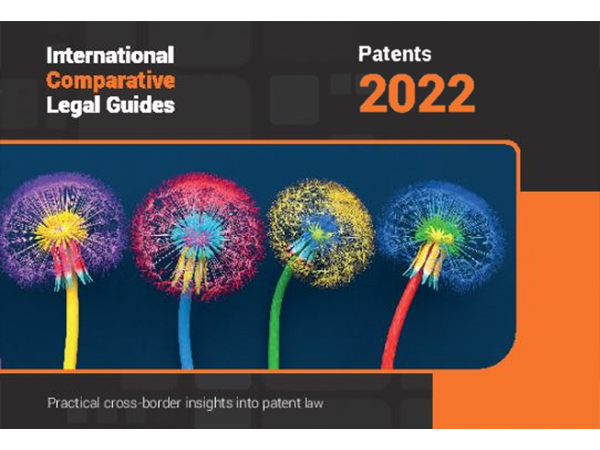
Intellectual Property
Viewpoints
Filter by:
New revised USMCA trade deal affects intellectual property rights, but not exclusivity period for biologics
December 17, 2019 | Blog | By Thomas Wintner, Nana Liu
On December 10, 2019, an agreement was reached between the United States, Mexico, and Canada on amendments to the U.S.-Mexico-Canada Agreement (“USMCA”). The USMCA, if ratified by each respective country, would replace the North American Free Trade Agreement (“NAFTA”), which has been in effect since January 1, 1994.
Read more
PTAB allows Amending Claims on Grounds not raised by Petitioner, but were Addressed by the District Court in its Finding of Indefiniteness
December 10, 2019 | Blog | By William Meunier
To amend challenged claims during an Inter Partes Review (IPR), the patent owner must show that the proposed amendment responds to a ground of unpatentability at issue in the IPR trial.
Read more
Relying on Outside Prior Art in an IPR – Not so fast!
December 10, 2019 | Blog | By Daniel Weinger, Serge Subach
The Court of Appeals for the Federal Circuit (CAFC) has recently reminded the Patent Trial and Appeal Board (the Board) that it may not rely on evidence and arguments that fall outside the scope of the instituted grounds during Inter Partes Review (IPR) proceedings. In re IPR Licensing, Inc., No. 2018-1805 (Fed. Cir. Nov. 22, 2019).
Read more
HHS HIV Drug Lawsuit: Setting Precedent for Other High Priced Medications or Government Collaborations?
December 9, 2019 | Blog
On November 6, 2019, the bonds between the U.S. government and pharmaceutical companies were stretched when the U.S. Department of Health and Human Services (“HHS”) filed a patent infringement lawsuit against Gilead Sciences in Delaware federal court regarding Gilead’s popular HIV drugs, Truvada® and Descovy®.
Read more
Favorable Trends For Patent Owners Post-Aqua Products
November 21, 2019 | Blog | By Daniel Weinger
When former President Barack Obama signed the Leahy–Smith America Invents Act into law on Sept. 16, 2011, the patent system in the United States underwent one of its most sweeping and significant overhauls. The AIA replaced the then-existing post-grant review proceeding of inter partes reexamination with several new proceedings known as inter partes review, post grant review and covered business method patent review. Congress implemented AIA reviews to streamline disputes over patent validity, with the goal of reducing costs for all involved. In October 2017, the U.S. Court of Appeals for the Federal Circuit in Aqua Products Inc. v. Matal shifted the burden by putting it back on the challenger to prove unpatentability.
Read more
Counterproductive and Cost-Increasing Litigation Tactics Are Objectively Unreasonable in Section 285 Attorney Fee Award Analysis
November 20, 2019 | Blog | By Andrew DeVoogd
Nearly six years ago, the Supreme Court in Octane Fitness v. ICON Health & Fitness promulgated a “totality of the circumstances test” for awarding reasonable attorney fees to the prevailing party in exceptional cases under 35 U.S.C. §285. As lower courts have applied this standard, it has become clear that the motivation and conduct of the losing party is a focal point of the exceptionality analysis. However, two recent decisions emphasize that bad faith arguments and litigation tactics—by both parties and in all stages of litigation—are critical to the exceptionality analysis in Section 285 attorney fee awards.
Read more
Copy Cats: Evidence of Copying a Specific Product NOT Required
November 12, 2019 | Blog | By Ken Jenkins
On October 30, 2019, the Federal Circuit held that evidence of copying may be used to rebut an obviousness challenge, even if that evidence does not relate to the copying of a specific product. (Liqwd, Inc. v. L’Oreal USA, Inc.; appeal from PGR2017-00012).
Read more
Key Considerations for Global SEP Litigation - Part 2
November 5, 2019 | Blog | By Michael Renaud, James Wodarski, Matthew Galica
The adoption of multiple, standardized technologies looms on the horizon. This presents the challenge of balancing innovator’s intellectual property rights with implementer’s desire for fair access to technology. As more implementers adopt efficient infringement to circumvent this equilibrium altogether, standard-essential patent (“SEP”) licensing disputes have increased.
Read more
Can Infringement Contentions be Amended to Add New Claims Resulting from an Ex Parte Reexam Filed after IPRs Invalidated Some but Not All Claims?
November 5, 2019 | Blog | By Brad M Scheller
Judge Gilliam of the Northern District of California recently answered this question and provided helpful guidance on the interplay of IPRs, reexaminations and district court litigation. In IXI Mobile (R&D) Ltd., et al., v. Samsung Elec. Co. Ltd. and IXI Mobile (R&D) Ltd., et al. v. Apple Inc., Judge Gilliam denied plaintiffs’ (“IXI”) motion for leave to amend their infringement contentions and asserted claims because IXI was not diligent in identifying new contentions or new accused products.
Read more
ITC rejects minimum threshold requirement for domestic industry economic prong and emphasizes the importance of contextual evidence and case-by-case analyses
November 4, 2019 | Blog | By Michael Renaud, Andrew DeVoogd, Matthew Karambelas, Nana Liu
In a recent decision clarifying the legal standards of the International Trade Commission’s domestic industry requirement, the Commission has upheld, with modified reasoning, Chief Administrative Law Judge Bullock’s initial determination (“ID”), finding no domestic industry in Certain Carburetors and Products Containing Such Carburetors, Inv. No. 337-TA-1123, Comm’n Op. (Oct. 28, 2019).
Read more
Federal Circuit Holds Appointment of PTAB Judges Violates the Constitution, Vacates and Remands Final Written Decision
November 4, 2019 | Blog | By Michael Newman, Daniel Weinger, Courtney Herndon
In a decision with potential far-reaching implications, Arthrex, Inc. v. Smith & Nephew, Inc., the Federal Circuit held Thursday that appointments of Administrative Patent Judges of the Patent Trial and Appeal Board violated the Appointments Clause of the U.S. Constitution.
Read more
Key Considerations for Global SEP Litigation - Part 1
October 30, 2019 | Blog | By Michael Renaud, James Wodarski, Matthew Galica
Litigation involving standard-essential patents (“SEPs”) is on the rise. The now longstanding and disturbing impact of efficient infringement by recalcitrant implementers is the predominant cause of the increase.
Read more
USPTO Proposes New Rules for Amending Claims During AIA Reviews
October 25, 2019 | Blog | By Daniel Weinger
Earlier this week, the United States Patent and Trademark Office (“USPTO”) proposed rule changes for amending patents in AIA proceedings. The proposed rule changes would apply to inter partes review (“IPR”), post-grant review (“PGR”), and covered business method patent review (“CBM”) (collectively, “post-grant trial”) proceedings before the Patent Trial and Appeal Board (“PTAB”) to make explicit that a patent challenger bears the burden of persuasion regarding motions to amend filed during these proceedings.
Read more
Federal Circuit Reverses PTAB Finding Tarceva® Method of Treatment Claims Invalid for Lack of Reasonable Expectation of Success Based on over 99.5% Failure Rate among Treatment Candidates
October 15, 2019 | Blog | By Peter Cuomo, Joe Rutkowski
In a precedential opinion on October 4, 2019, the United States Court of Appeals for the Federal Circuit, in OSI Pharmaceuticals v. Apotex, No. 2018-1925, reversed the Board’s Final Written Decision in an inter partes review (“IPR”) finding that claims of United States Patent No. 6,900,221 (the “‘221 patent”) were invalid as obvious.
Read more
Collateral estoppel does not attach to PTAB invalidity determination pending appeal
October 10, 2019 | Blog | By Adam Samansky, Peter Cuomo, Nana Liu
Recently, in Sanofi-Aventis v. Mylan, 2:17-cv-09105-SRC-CLW, Judge Stanley Chesler of the United States District Court, District of New Jersey, denied a motion by defendant Mylan for summary judgment of invalidity of asserted patent claims that were found to be obvious by the Patent Trial and Appeal Board (“PTAB”).
Read more
Ex parte WILHELM HEINE: PTAB Rejects Examiner’s Unreasonable Claim Construction
October 7, 2019 | Blog | By Andrew D. Skale
During patent prosecution, Examiners often liberally apply the broadest reasonable interpretation standard in rejecting claims. When responding to these rejections, it is important to remember that there are limits to an Examiner’s broadest reasonable interpretation.
Read more
Patenting Considerations for Artificial Intelligence in Biotech and Synthetic Biology - Part 1
September 30, 2019 | Blog | By Terri Shieh-Newton, Marguerite McConihe
Artificial Intelligence (AI) inventions have aided development in nearly every industry, but perhaps none more so than synthetic biology. For synthetic biology researchers, AI has developed into a vital tool to create cutting edge applications.
Read more
Prior Civil Action Bars IPR - A precedential decision
September 24, 2019 | Blog | By Ken Jenkins
On August 29, 2019, the Patent Trial and Appeal Board (PTAB) designated as precedential its January 31, 2019 decision in Cisco Systems, Inc. v. Chrimar Systems, Inc. In Cisco, the PTAB held that 35 U.S.C. § 315(a)(1) bars institution of IPR if the petitioner filed an earlier civil action, even if such action was voluntarily dismissed by the petitioner without prejudice.
Read more
ITC suggests 5% Threshold for Domestic Industry Assessment; order may impact tech companies
September 23, 2019 | Blog | By Michael Renaud, Andrew DeVoogd, Matthew Karambelas, Nana Liu
Recently, Chief Administrative Law Judge (“CALJ”) Bullock of the U.S. International Trade Commission (“ITC”), in Certain Carburetors and Products Containing Such Carburetors, Inv. No. 337-TA-1123, Order No. 77, suggested that “significant” or “substantial” domestic industry investments must amount to greater than 5% of domestic industry product sales in the United States.
Read more
Recap of Federal Register Notice on Artificial Intelligence (AI) Patent Issues
September 17, 2019 | Blog | By Marc Morley, Michael Renaud
Artificial Intelligence (AI) is increasingly becoming important across a diverse spectrum of technologies and businesses. As AI grows in importance in business and technology, so too grows the number of patent applications and the potential for uncertainty. Therefore, the U.S. Patent and Trademark Office (USPTO) must continue to ensure the appropriate balance in the administration of our IP system.
Read more
Explore Other Viewpoints:
- Data Centers & Digital Infrastructure
- AI: The Washington Report
- Antitrust
- Appellate
- Arbitration, Mediation & Alternate Dispute Resolution
- Artificial Intelligence
- Awards
- Bankruptcy & Restructuring
- California Land Use
- Cannabis
- Class Action
- Complex Commercial Litigation
- Construction
- Consumer Product Safety
- Corporate Governance (ESG)
- Cross-Border Asset Recovery
- DEI Legal Developments
- Debt Financing
- Direct Investing (M&A)
- Diversity
- EB-5 Financing
- Education & Nonprofits
- Employment
- EnforceMintz
- Environmental (ESG)
- Environmental Enforcement Defense
- Environmental Law
- Environmental, Social, and Corporate Governance (ESG)
- FDA Regulatory
- False Claims Act
- Federal Circuit Appeals
- Financial Institution Litigation
- Government Law
- Growth Equity
- Health Care
- Health Care Compliance, Fraud and Abuse, & Regulatory Counseling
- Health Care Enforcement & Investigations
- Health Care Transactions
- Health Information Privacy & Security
- IP Due Diligence
- IPRs & Other Post Grant Proceedings
- Immigration
- Impacts of a New US Administration
- Insolvency & Creditor Rights Litigation
- Institutional Investor Class Action Recovery
- Insurance & Financial Services
- Insurance Consulting & Risk Management
- Insurance and Reinsurance Problem-Solving & Dispute Resolution
- Intellectual Property
- Investment Funds
- Israel
- Licensing & Technology Transactions
- Life Sciences
- Litigation & Investigations
- M&A Litigation
- ML Strategies
- Medicare, Medicaid and Commercial Coverage & Reimbursement
- Mergers & Acquisitions
- Patent Litigation
- Patent Prosecution & Strategic Counseling
- Pharmacy Benefits and PBM Contracting
- Portfolio Companies
- Privacy & Cybersecurity
- Private Client
- Private Equity
- Pro Bono
- Probate & Fiduciary Litigation
- Products Liability & Complex Tort
- Projects & Infrastructure
- Public Finance
- Real Estate Litigation
- Real Estate Transactions
- Real Estate, Construction & Infrastructure
- Retail & Consumer Products
- Securities & Capital Markets
- Securities Litigation
- Social (ESG)
- Special Purpose Acquisition Company (SPACs)
- Sports & Entertainment
- State Attorneys General
- Strategic IP Monetization & Licensing
- Sustainable Energy & Infrastructure
- Tax
- Technology
- Technology, Communications & Media
- Technology, Communications & Media Litigation
- Trade Secrets
- Trademark & Copyright
- Trademark Litigation
- Unified Patent Court (UPC)
- Value-Based Care
- Venture Capital & Emerging Companies
- White Collar Defense & Government Investigations
- Women's Health and Technology








